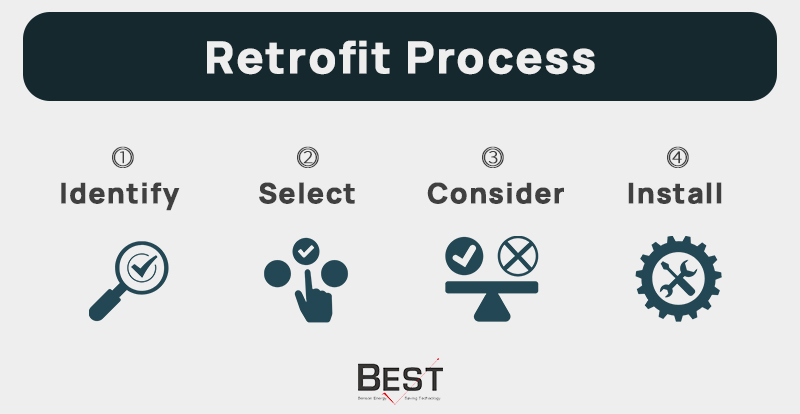
Differences 2G7 VS G23 Lighting (CFLs VS LED)
The phase-out of compact fluorescent lamps (CFLs) is part of a broader movement towards more energy-efficient and environmentally friendly lighting solutions. The reasons behind the phase-out are comprehensive, but we can figure out the main reasons are for environmental concerns, energy efficiency, advancements in technology and government regulations.
What are the implications of the Phase-out?
CFLs will become increasingly difficult to find as manufacturers stop producing them and retailers phase out their inventory. People are looking for alternatives, and LEDs are the primary alternative, offering numerous benefits. Although LEDs have a higher upfront cost compared to CFLs, the overall cost of ownership is lower due to their longer lifespan and lower energy consumption.

2G7 CFLs and G23 CFLs are one of the most popular CFLs in the lighting industry. The 2G7 and G23 sockets are both used for compact fluorescent lamps (CFLs), but they have distinct differences in design, pin configuration, and typical applications. Here’s a detailed comparison:
- 2G7 Socket
- Pin Configuration: The 2G7 socket has four pins arranged in a straight line.
- Lamp Type: It is typically used for 4-pin CFLs, often referred to as "plug-in" or "PL" lamps.
- Typical Applications: Commonly found in commercial lighting fixtures such as recessed downlights, troffers, and some desk lamps.
- Ballast Requirement: Usually requires an electronic ballast to operate.
- Common Wattages: 7W, 9W, 11W, etc., depending on the specific lamp design and application.
- G23 Socket
- Pin Configuration: The G23 socket has two pins arranged side-by-side with a plastic base that also includes a grounding or locating pin.
- Lamp Type: It is used for 2-pin CFLs, often referred to as "plug-in" or "PL" lamps.
- Typical Applications: Often found in residential and commercial fixtures like wall sconces, under-cabinet lights, and some desk lamps.
- Ballast Requirement: Usually operates with a magnetic ballast.
- Common Wattages: 5W, 7W, 9W, 13W, etc., depending on the specific lamp design and application.
- Key Differences between 2G7 and G23
- Pin Configuration: The most obvious difference is the number of pins and their arrangement. 2G7 has four pins in a straight line, while G23 has two pins with a plastic base.
- Ballast Type: 2G7 typically uses electronic ballasts, while G23 can use magnetic ballasts.
- Lamp Shape and Size: 2G7 lamps are usually longer and slimmer compared to the more compact design of G23 lamps.
- Application: Due to their different designs and ballast requirements, they are used in slightly different types of fixtures.

- Retrofit Process
- Identify the Socket Type:
- For 2G7, look for a straight line of four pins.
- For G23, look for two pins with a plastic locating pin.
- Select Compatible LED Bulbs:
- Choose LED bulbs specifically designed to replace 2G7 or G23 CFLs. Ensure they match the socket type and electrical requirements.
- Consider Ballast Compatibility:
- Plug and Play LEDs: Work with the existing ballast.
- 2G7 LEDs: we would be able to offer electronic ballast (ECG) compatible (ECGsmart) or both ballast compatibility and bypass type (ECGall)
- G23 LEDs: we would be able to offer magnetic ballast (CCG) compatible (SW) and support tandem connection with magnetic ballast compatibility or bypass.
- Ballast Bypass LEDs: Require the removal or bypassing of the existing ballast.
- 2G7 LEDs: we would be able to offer electronic ballast (ECG) compatible (ECGsmart) or both ballast compatibility and bypass type (ECGall)
- G23 LEDs: we would be able to offer magnetic ballast (CCG) compatible (SW) and support tandem connection with magnetic ballast compatibility or bypass.
- Plug and Play LEDs: Work with the existing ballast.
- Install the LED Bulbs
- Identify the Socket Type:
2G7 LEDs VS G23 LEDs made by BENSON ENERGY SAVING TECHNOLOGY
Specifications
| LED | 2G7 LED | G23 LED |
| Wattage | 3W, 4W, 5W, 6W | |
| Retrofit old CFL | 5W, 7W, 9W, 11W | |
| Size | D34*89mm D34*119mm D34*149mm D34*219mm |
D34*108mm D34*136mm D34*166mm D34*235mm |
| Ra | >80 | |
| Beam Angle | 180° | |
| Lumen Efficacy | >120lm/W | |
| LED Materials | Aluminium Case + Plastic Milky Cover | |
| CCT | 2700K/3000K/4000K/5000K/6000K/6500K | |
| Ambient Temperature | –20 °C to 45 °C | |
| Lifetime | >50,000hrs | |
| Compatibility(LEDs Series) | ECGall: universal ballasts and AC power direct ECGsmart: ballasts compatible or with external LED driver SW: Direct AC power supply |
SW: Direct AC power supply DC: Dimmable with external LED driver |
Benson Energy Saving Technology is a professional manufacturer of commercial lighting products and specializes in optoelectronic research and development. We offer ODM and OEM services, as well as commercial, industrial, and office planning design, etc. Feel free to contact us for more information.
We provide a wide range of retrofit led solutions. Welcome luminaire manufacturers, lamp designers, interior designers, project engineers, and others who are looking for high-quality retrofit led. Contact us for more business cooperation.



